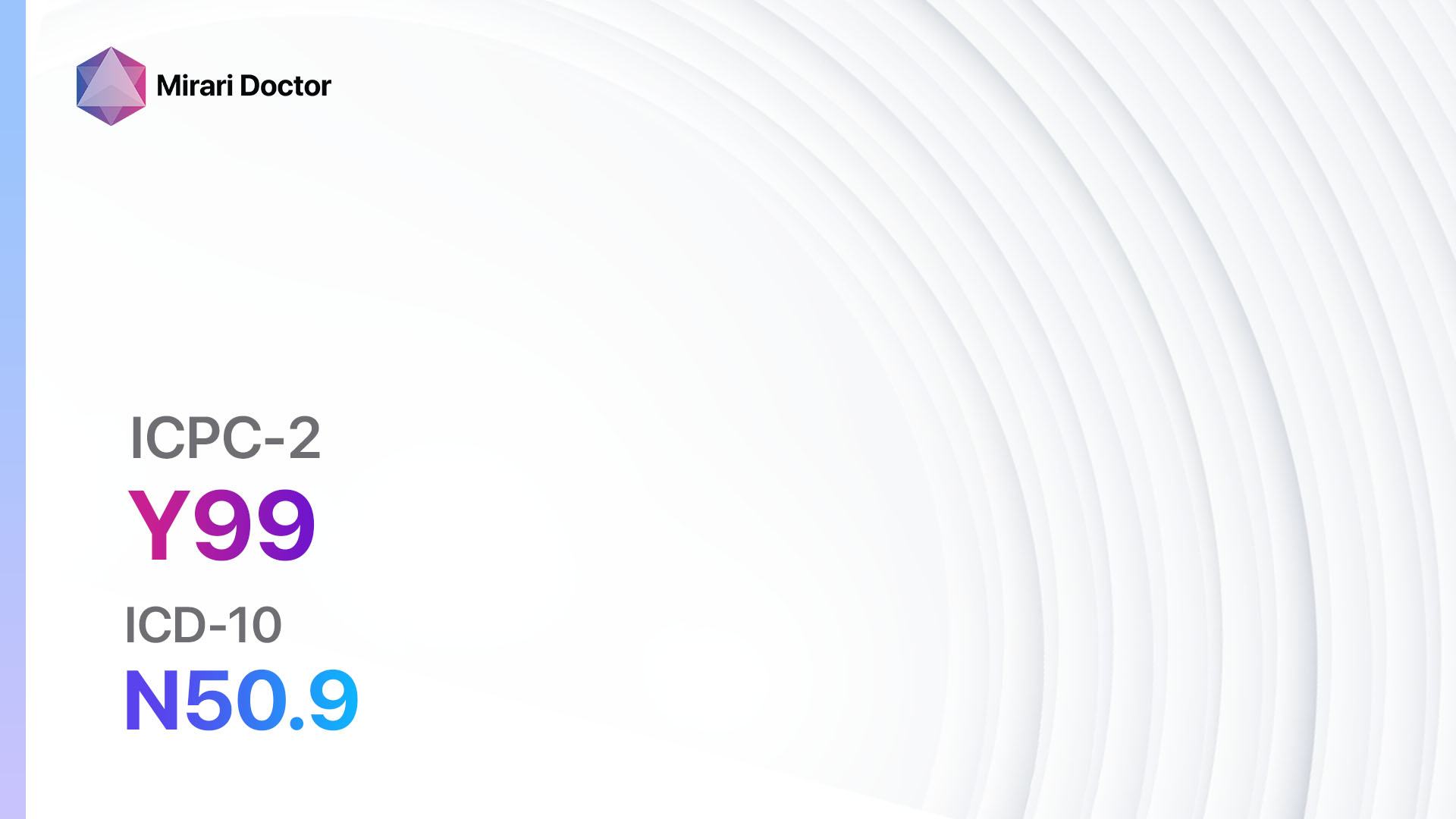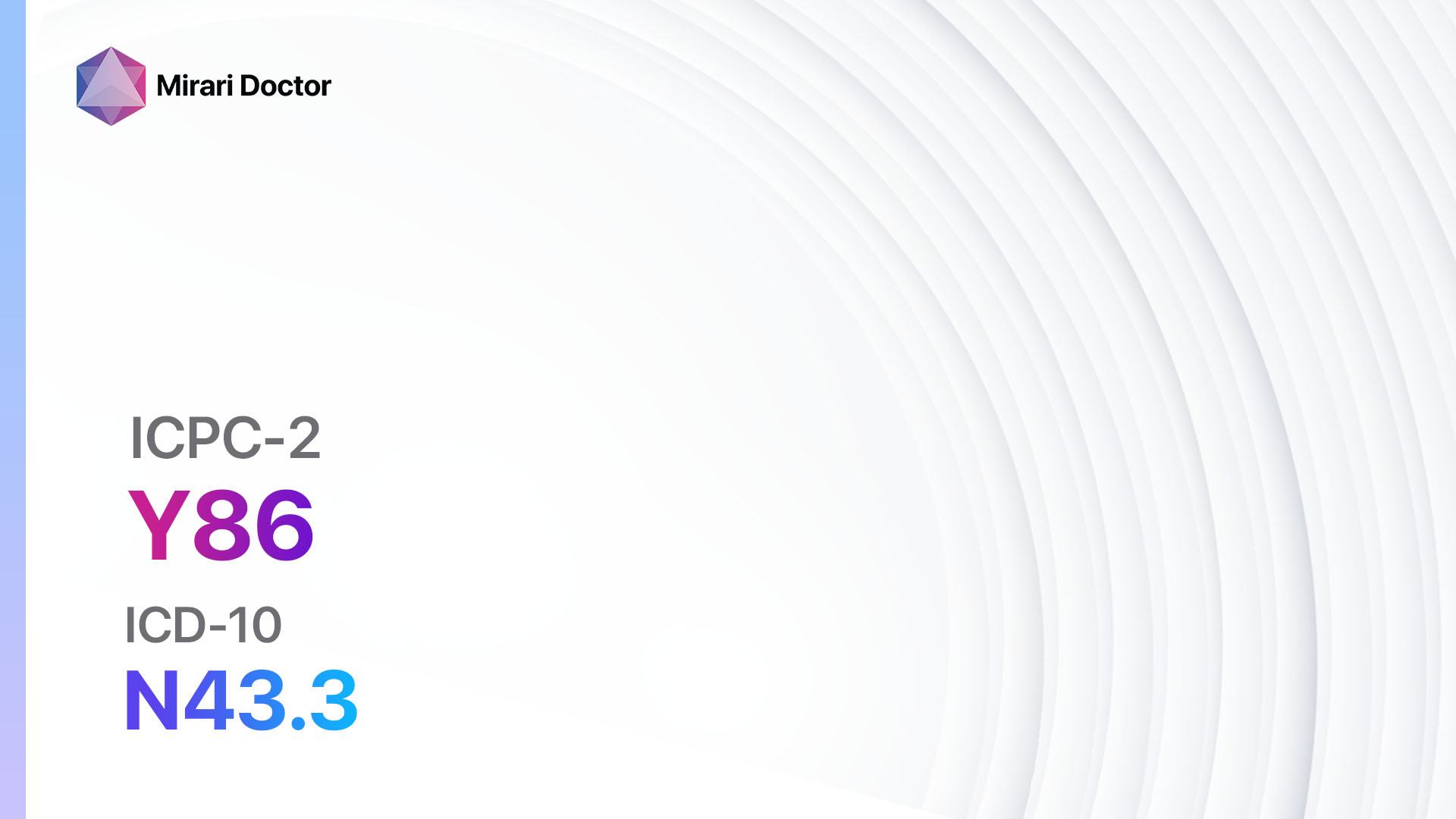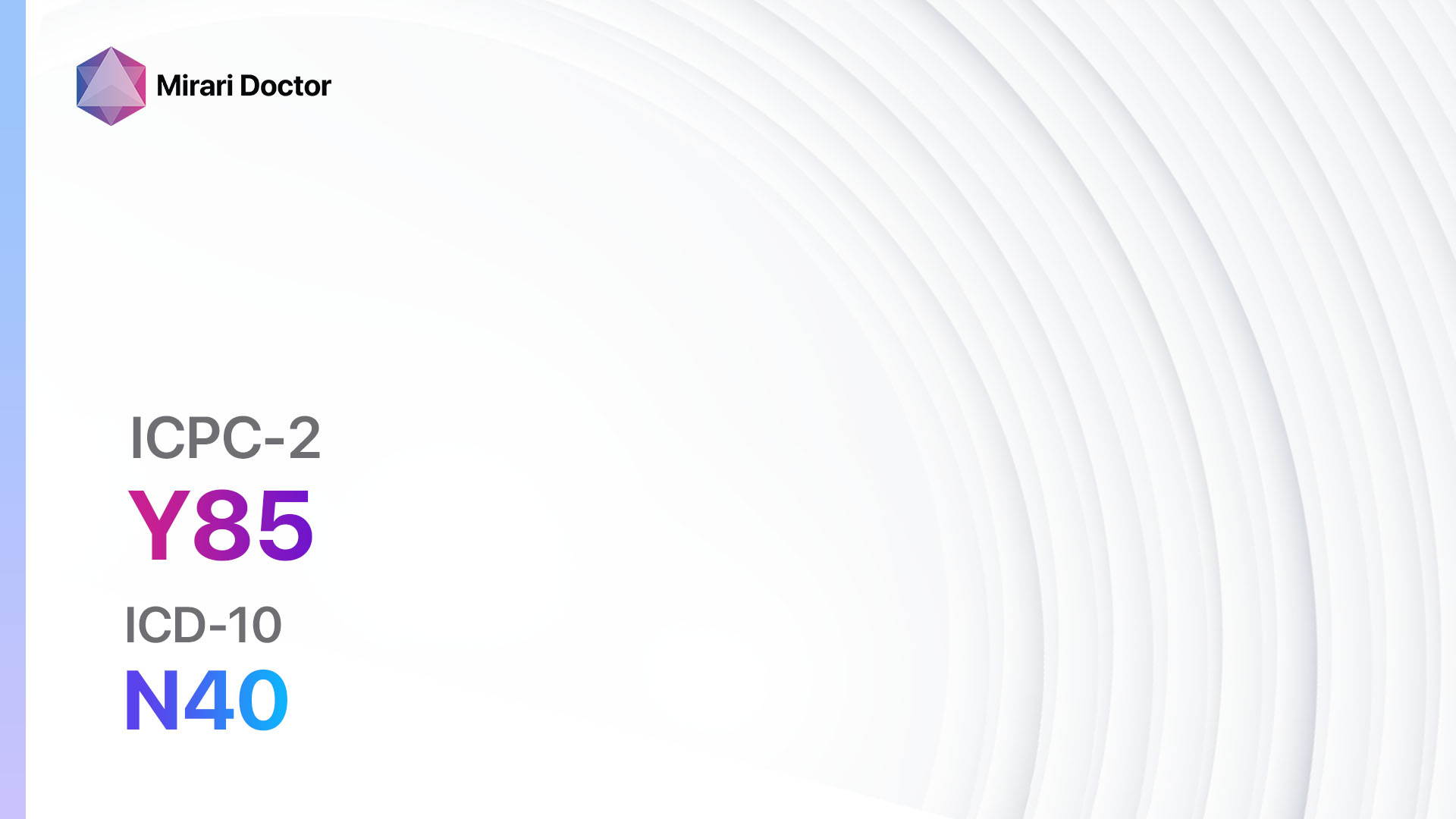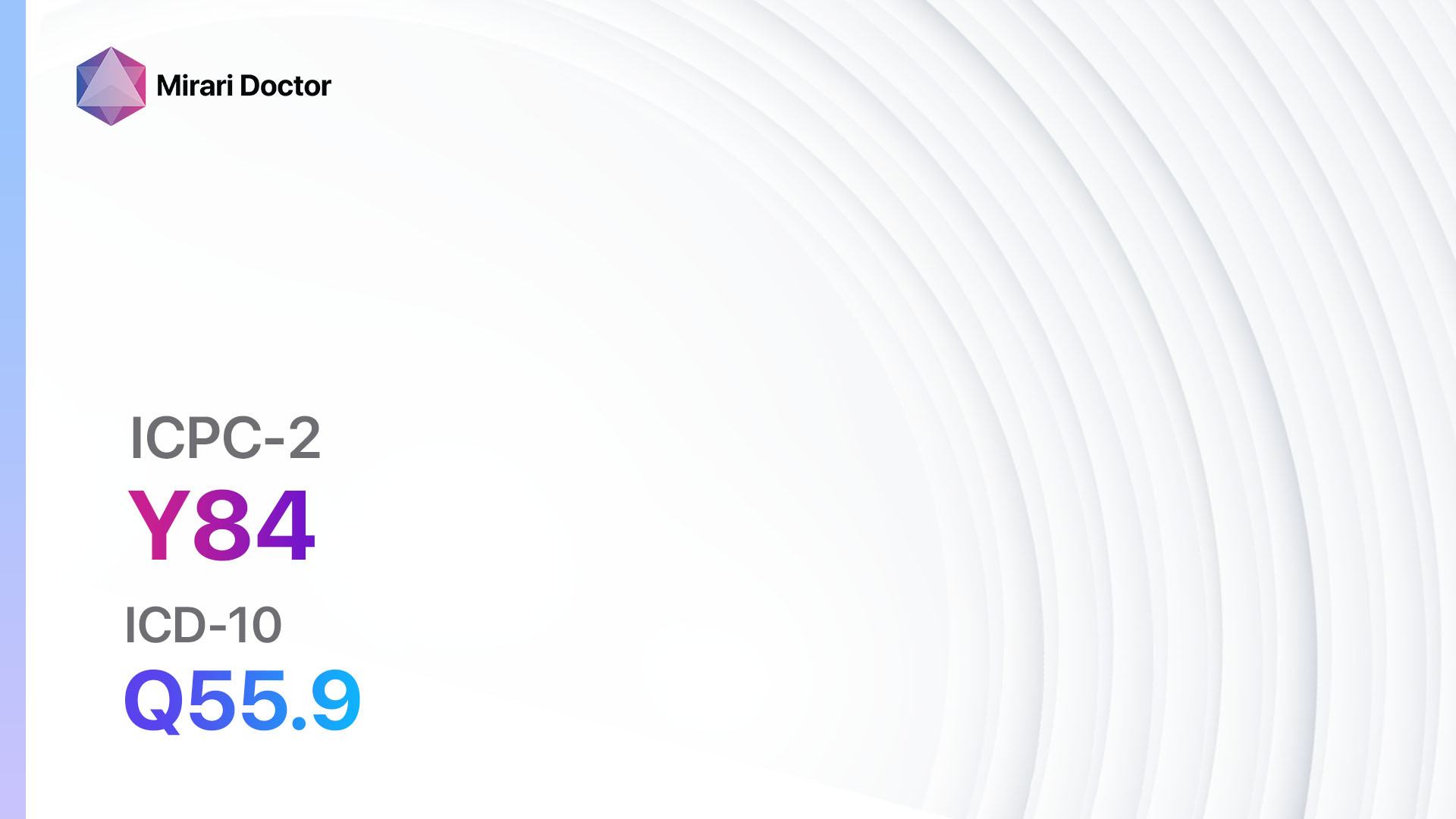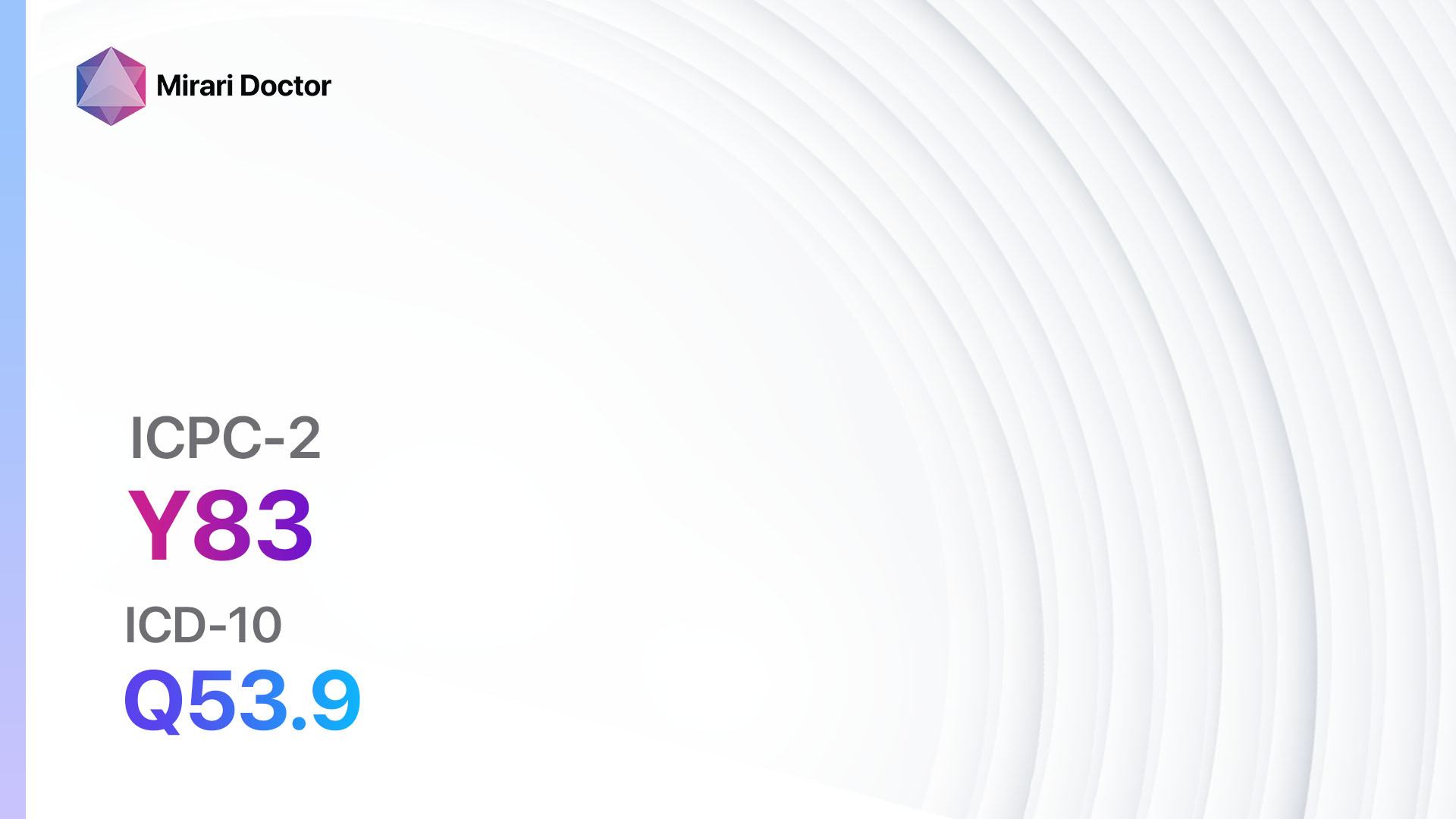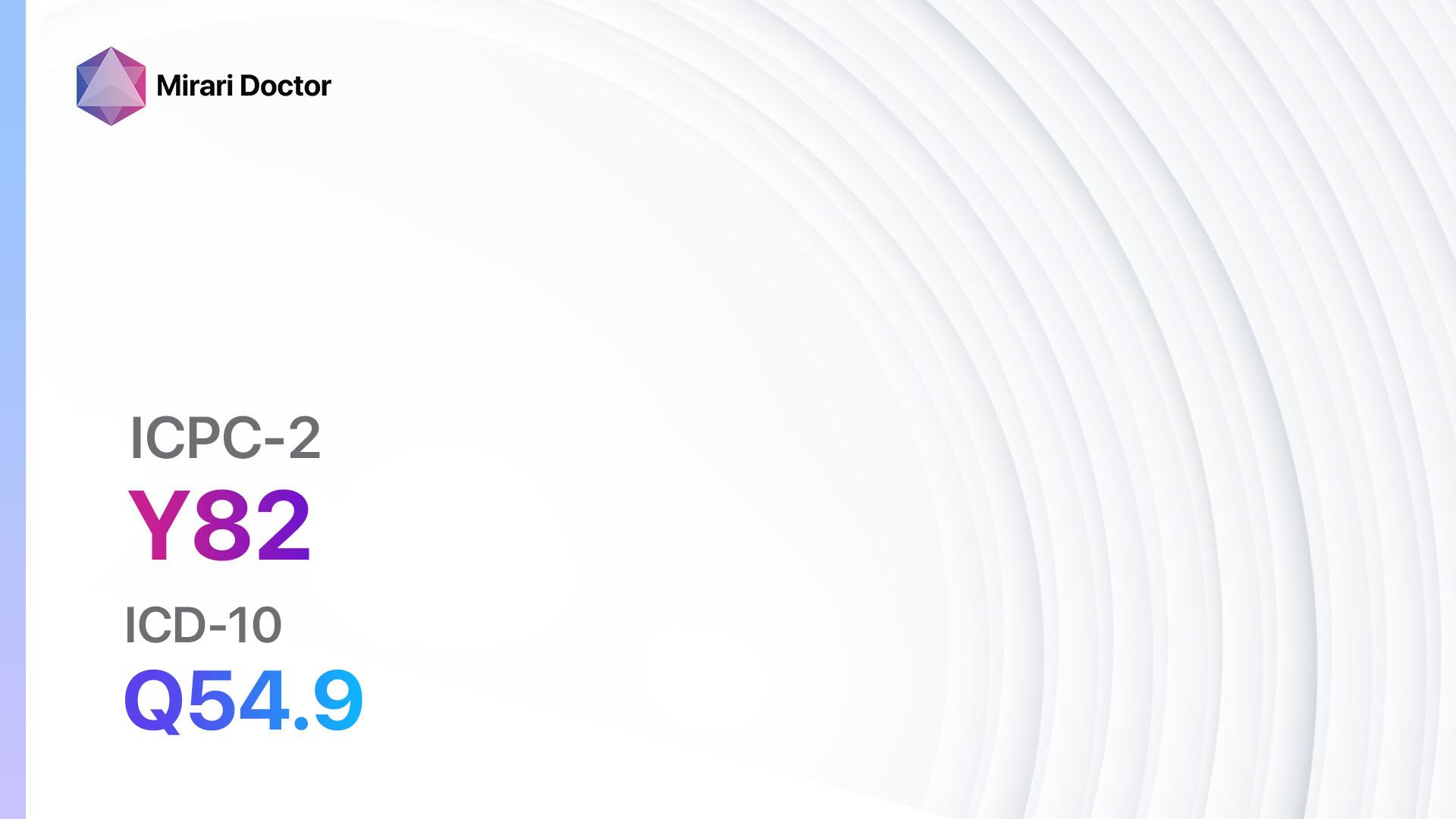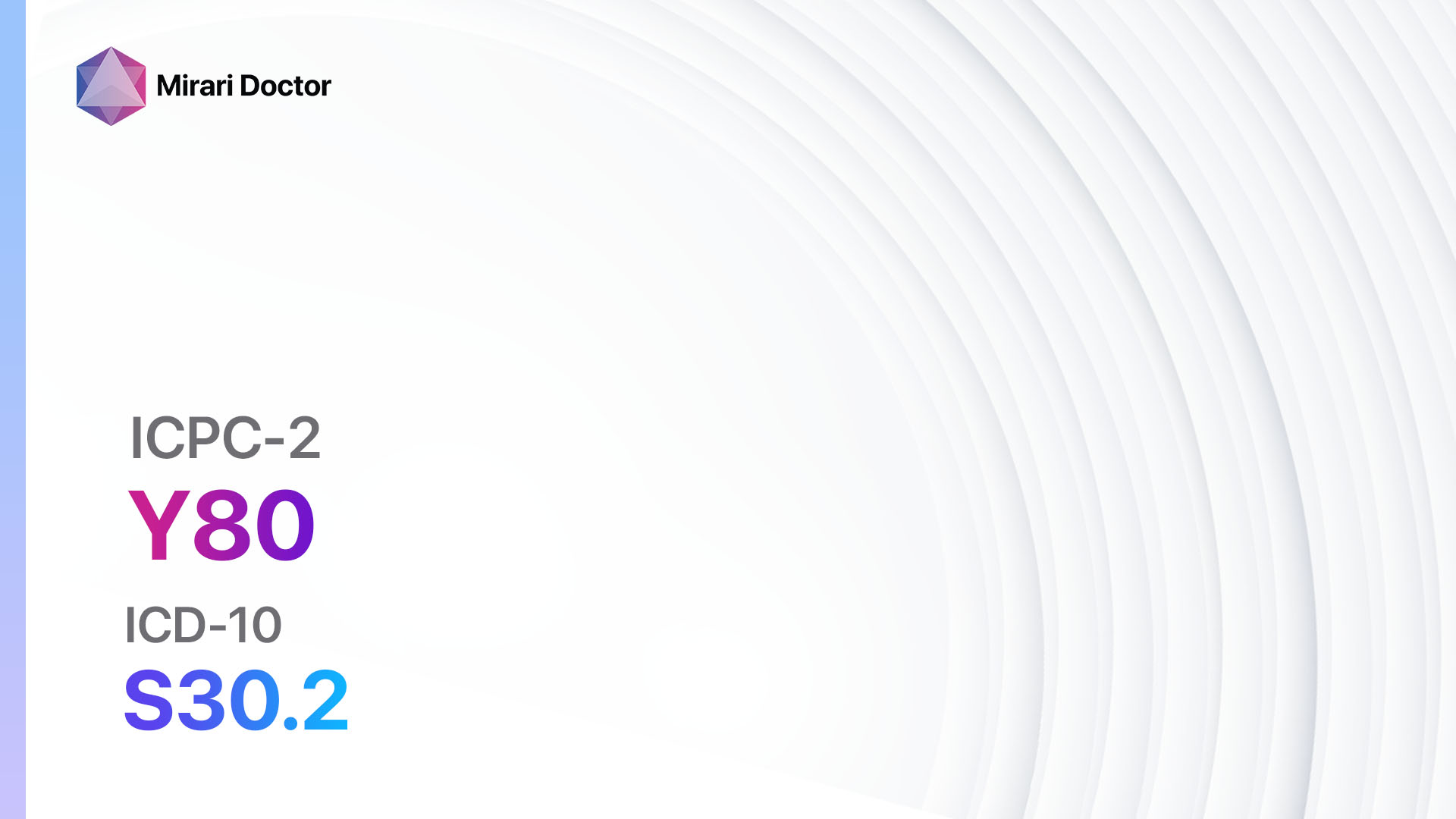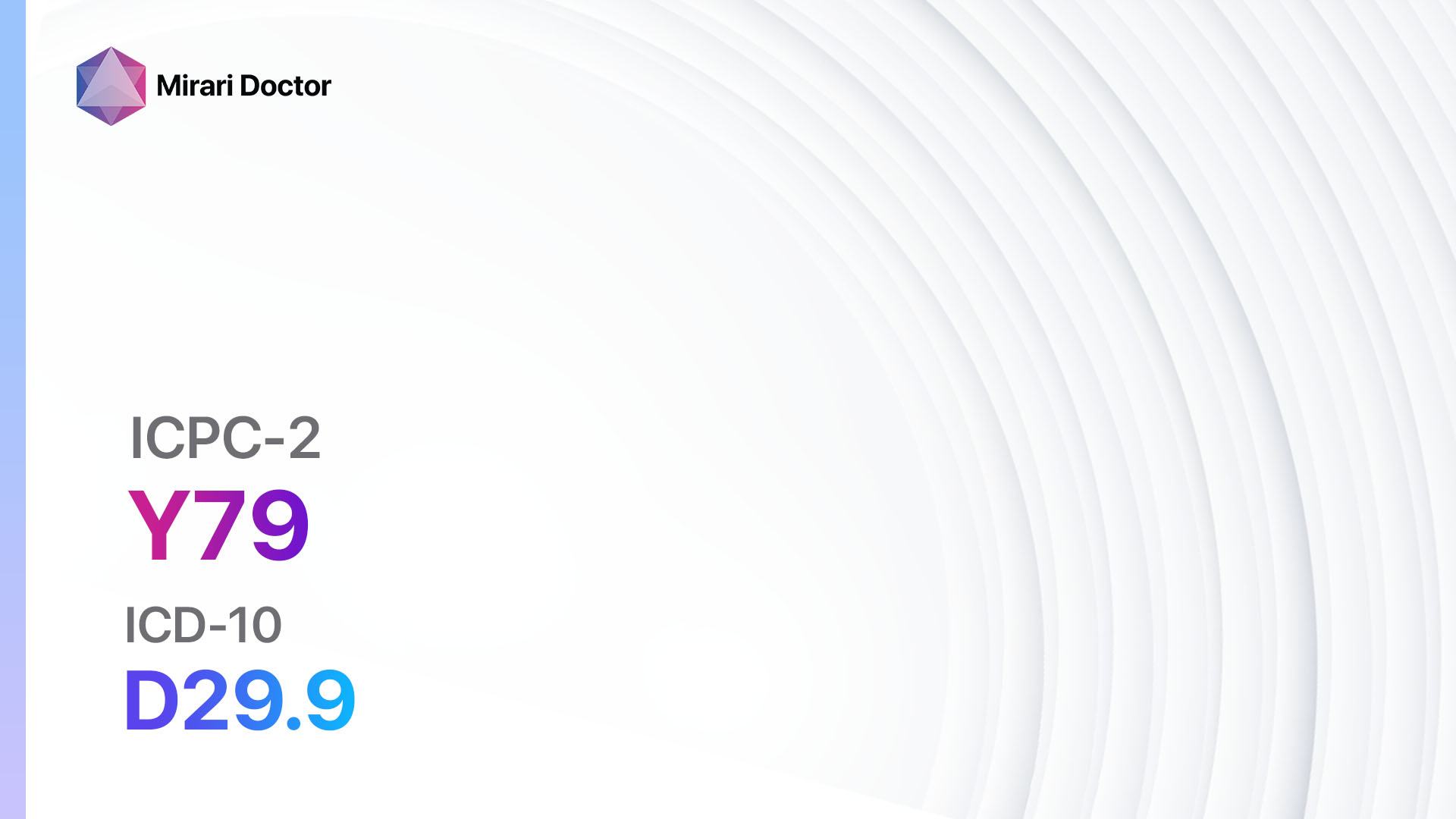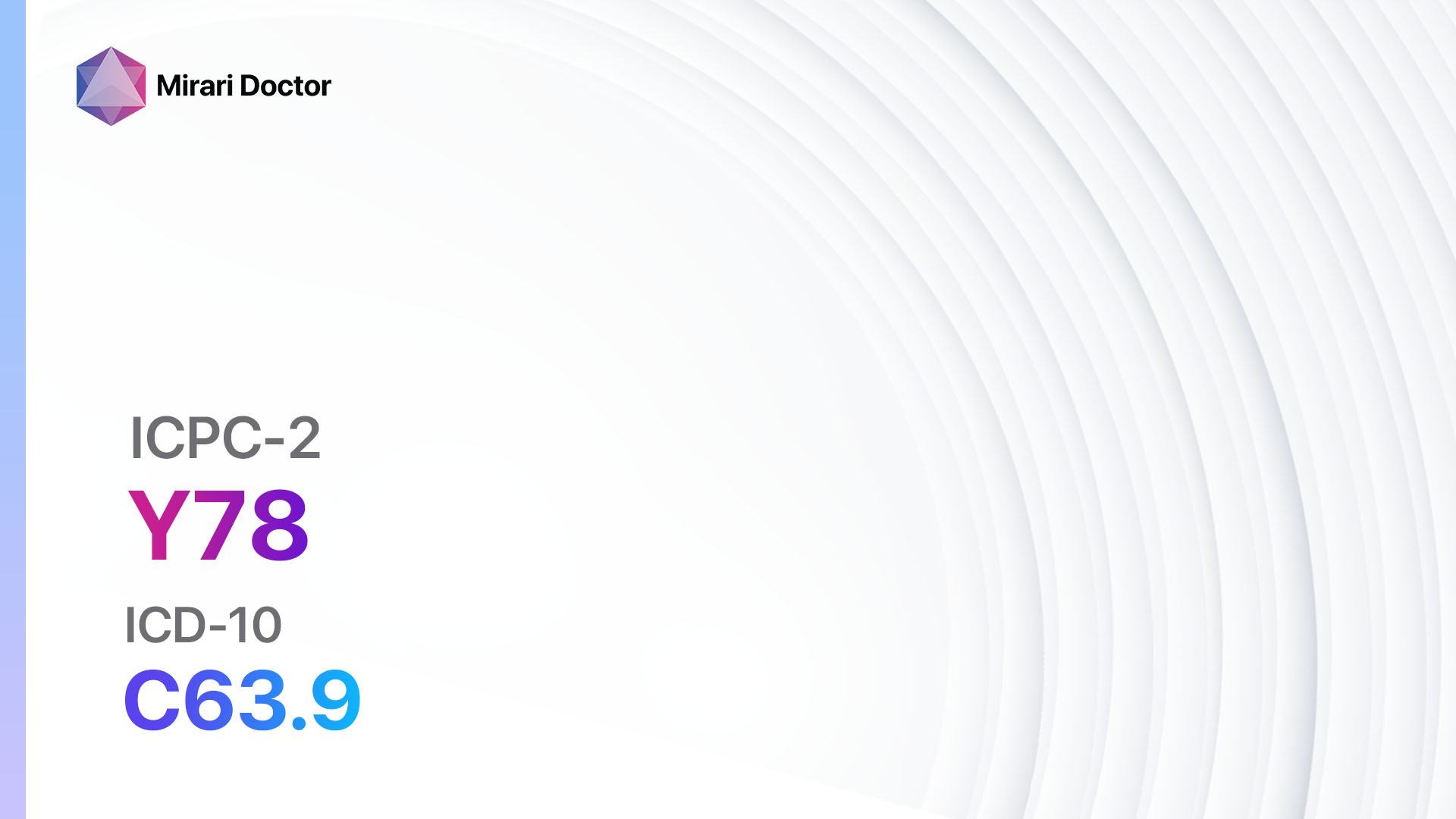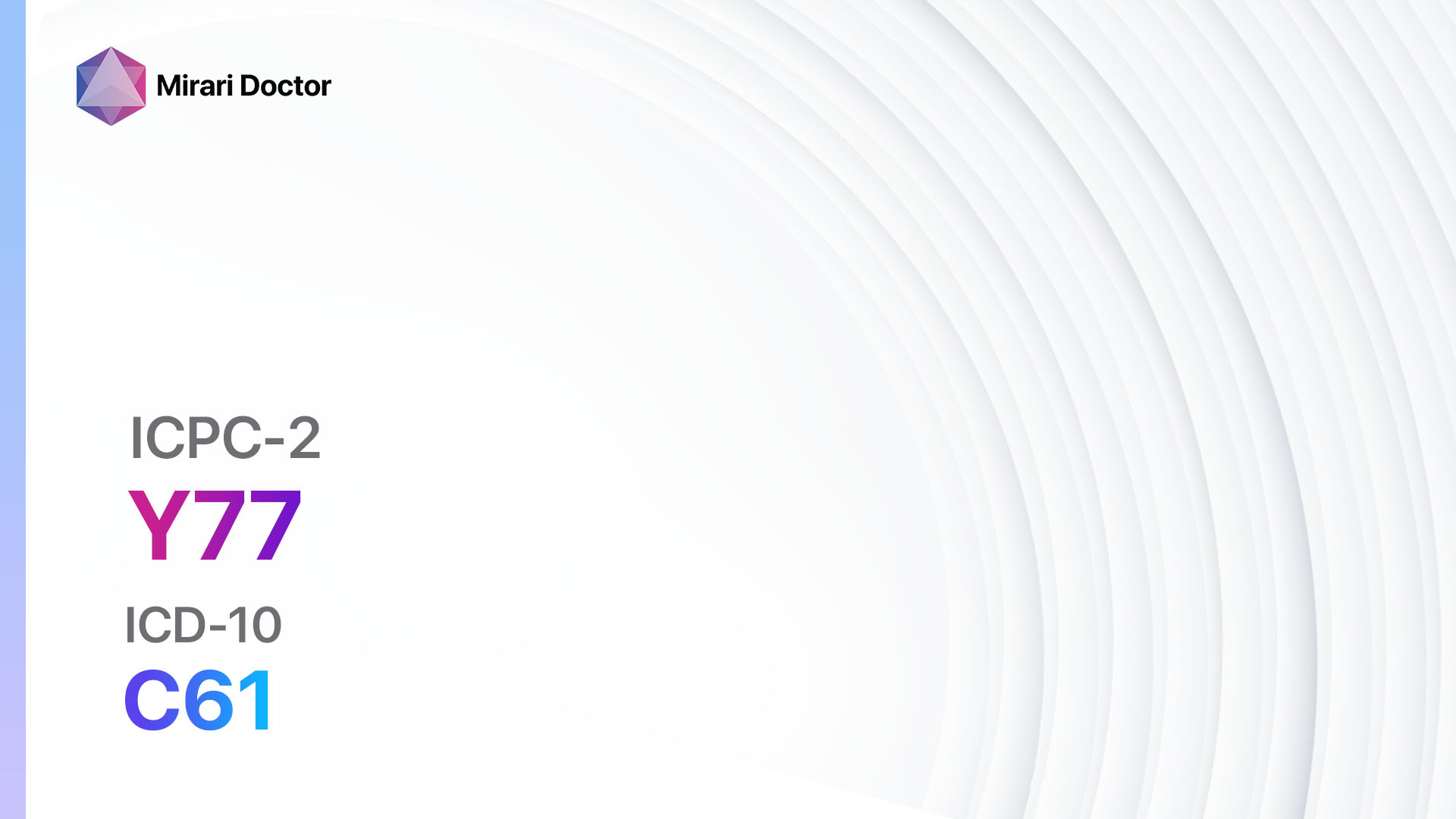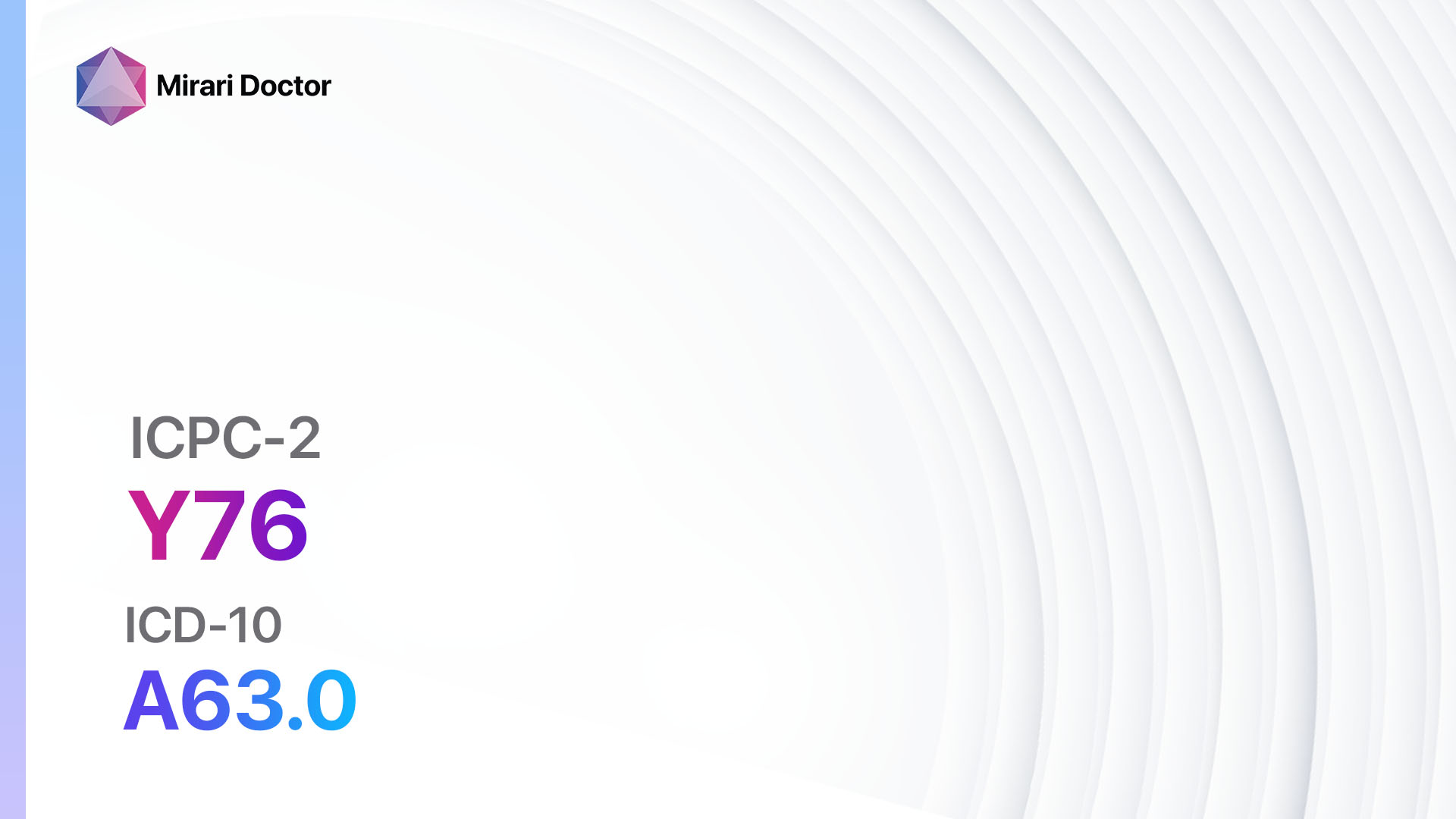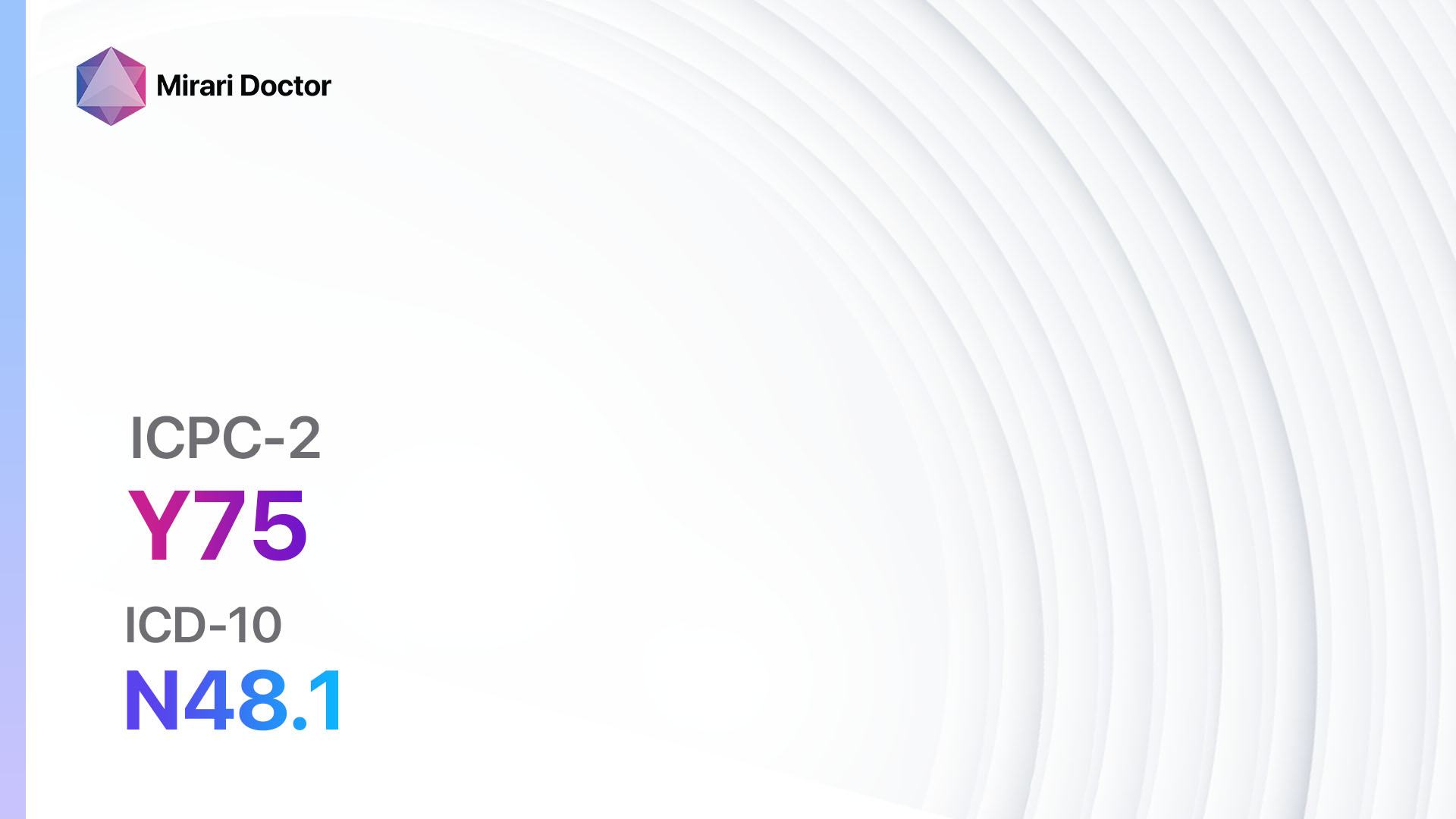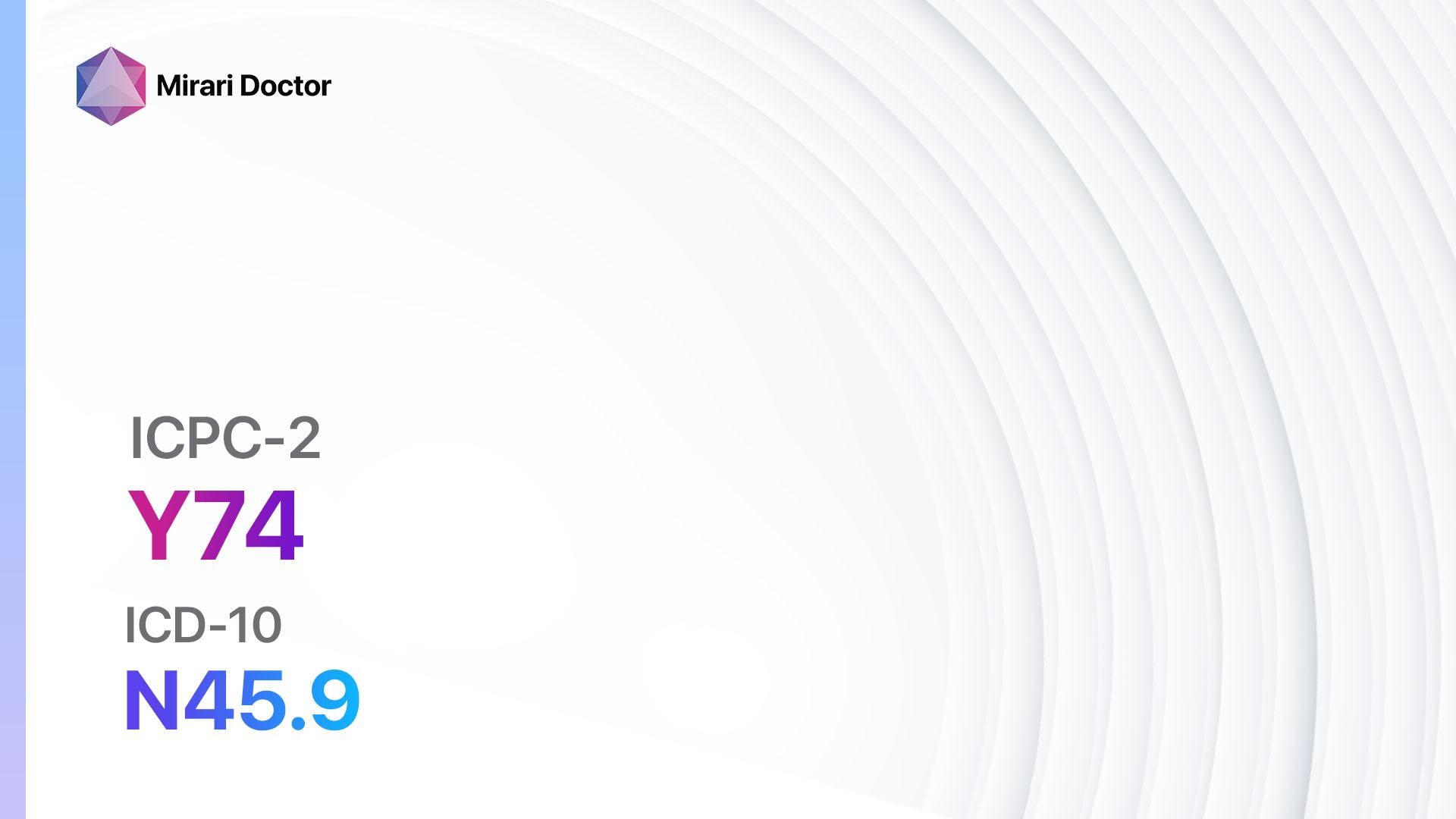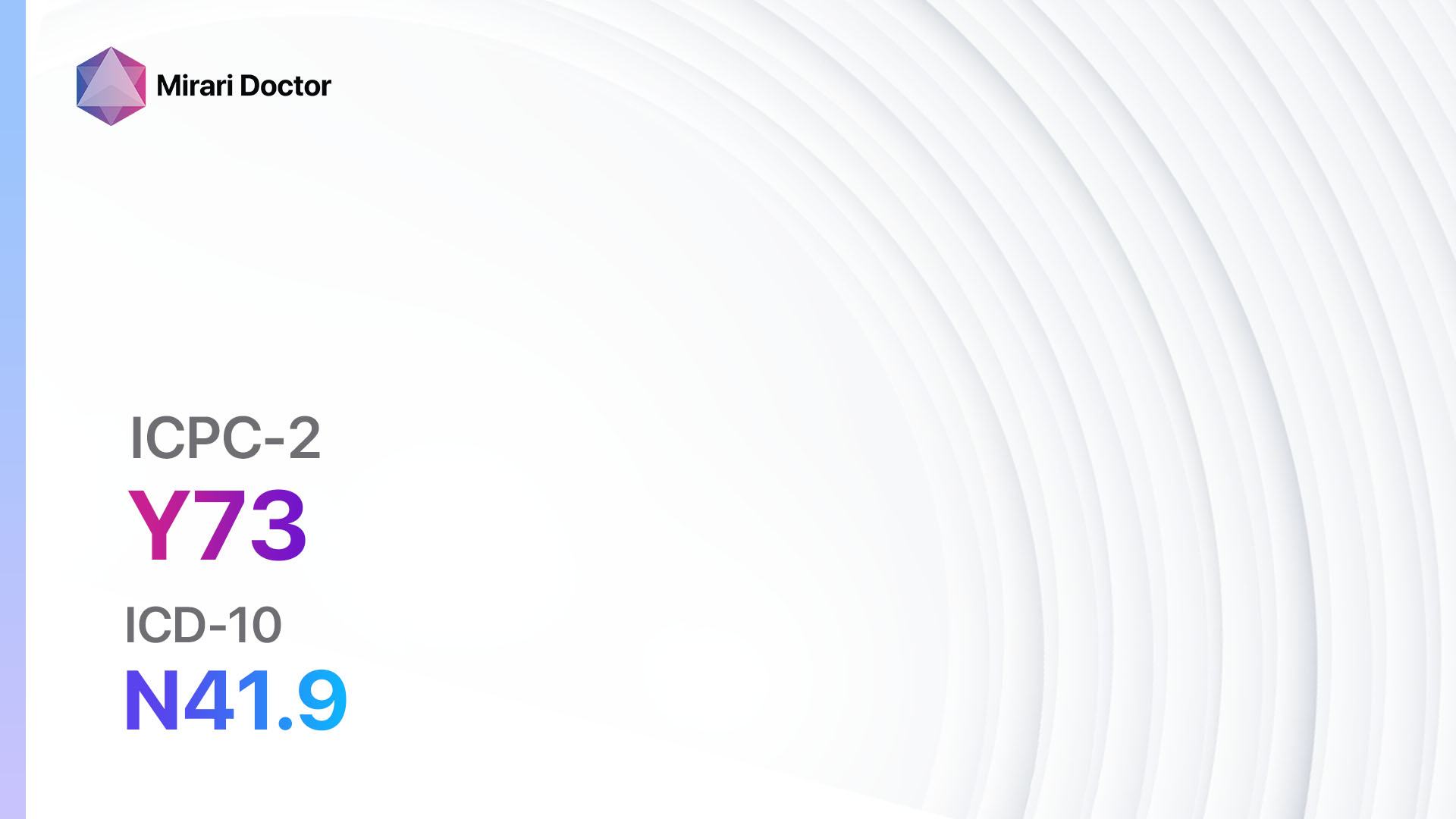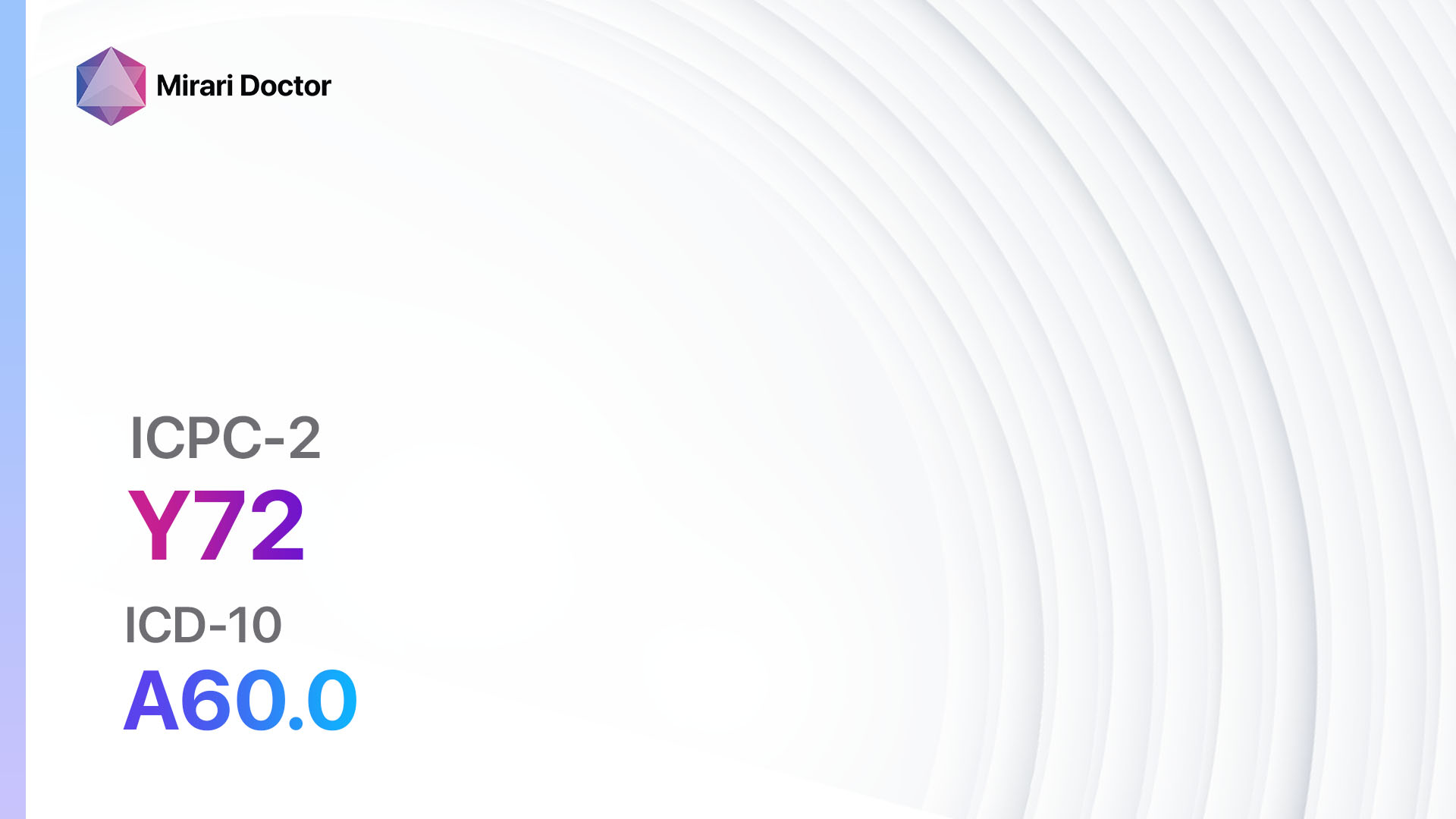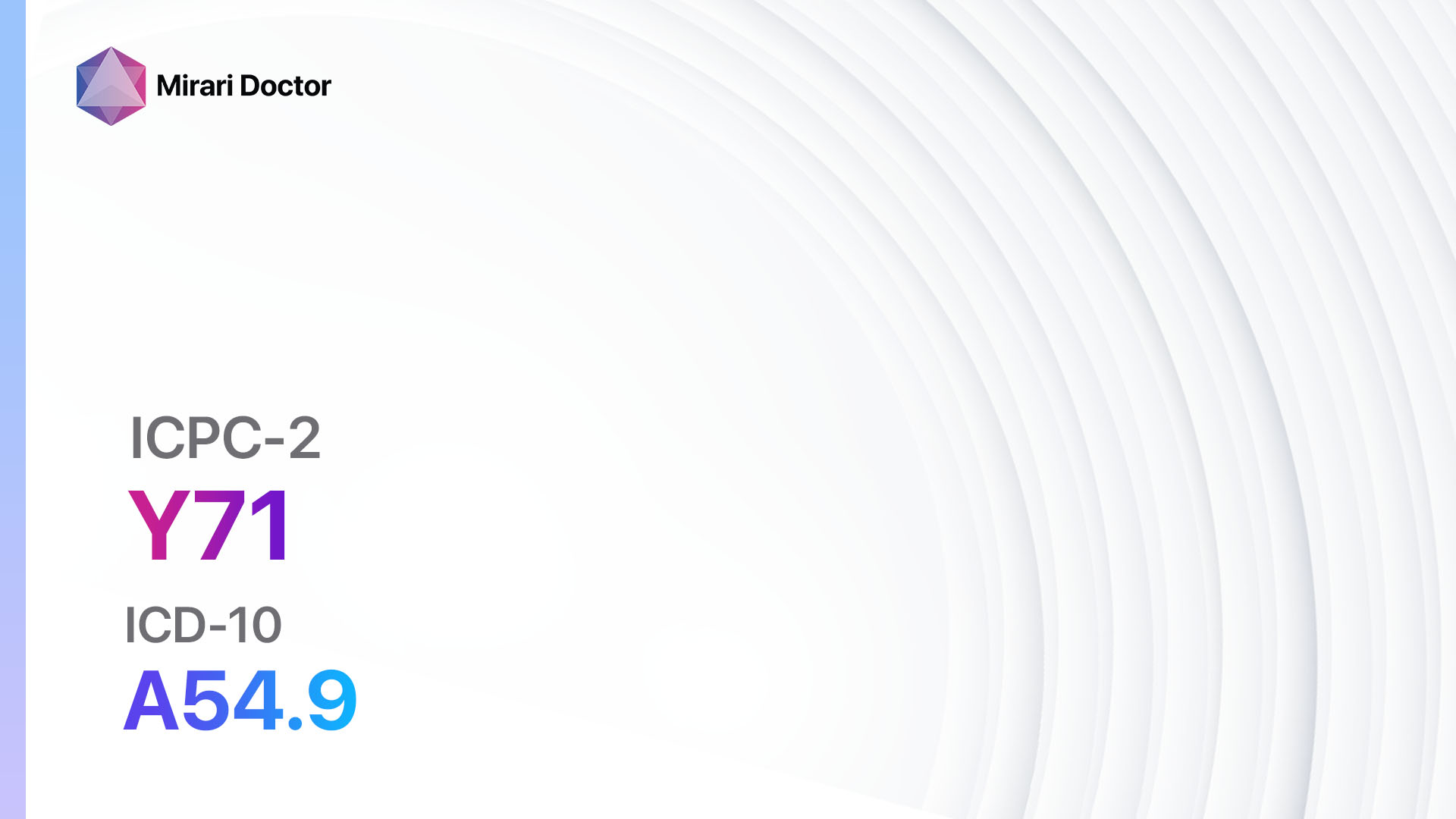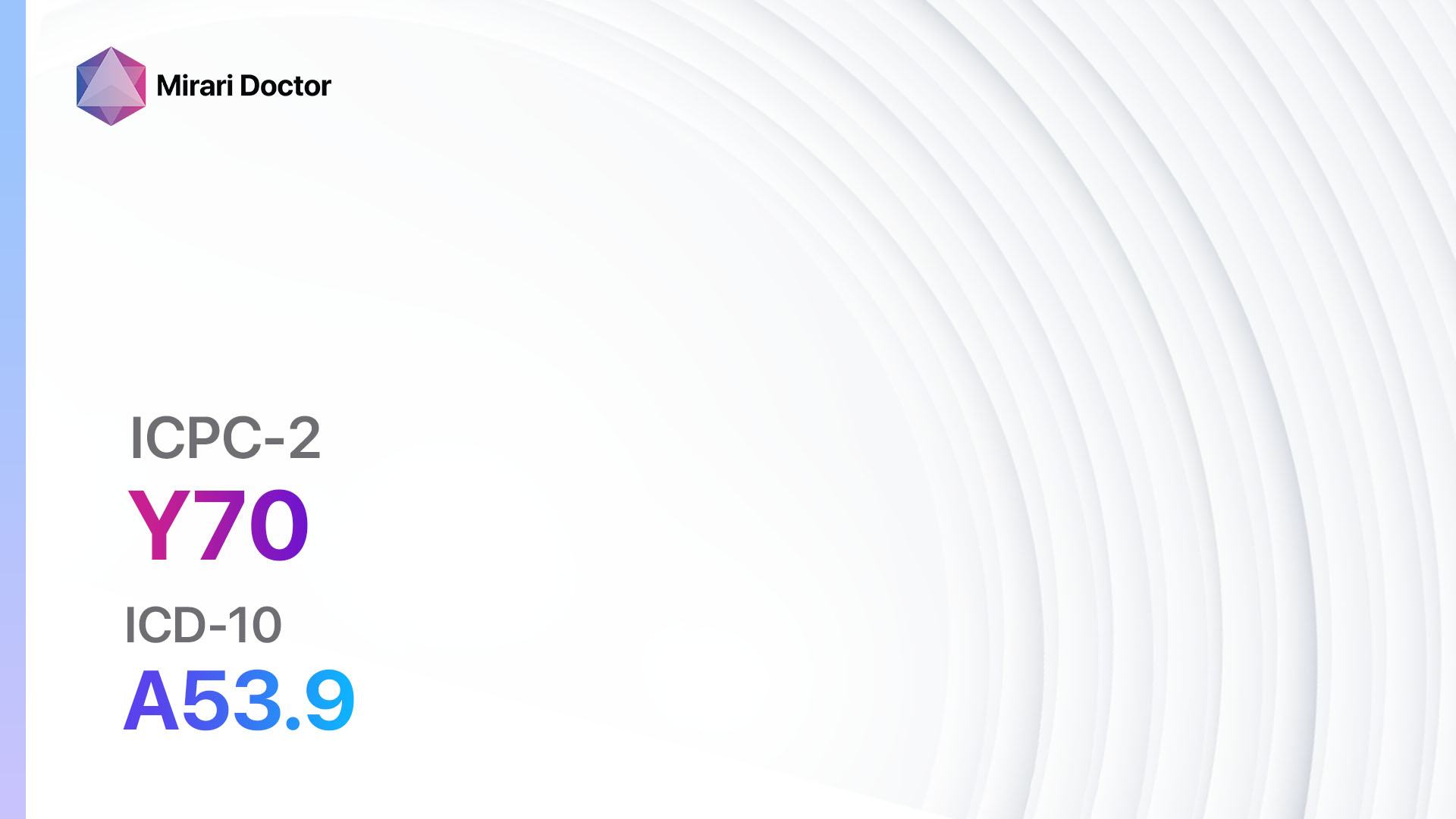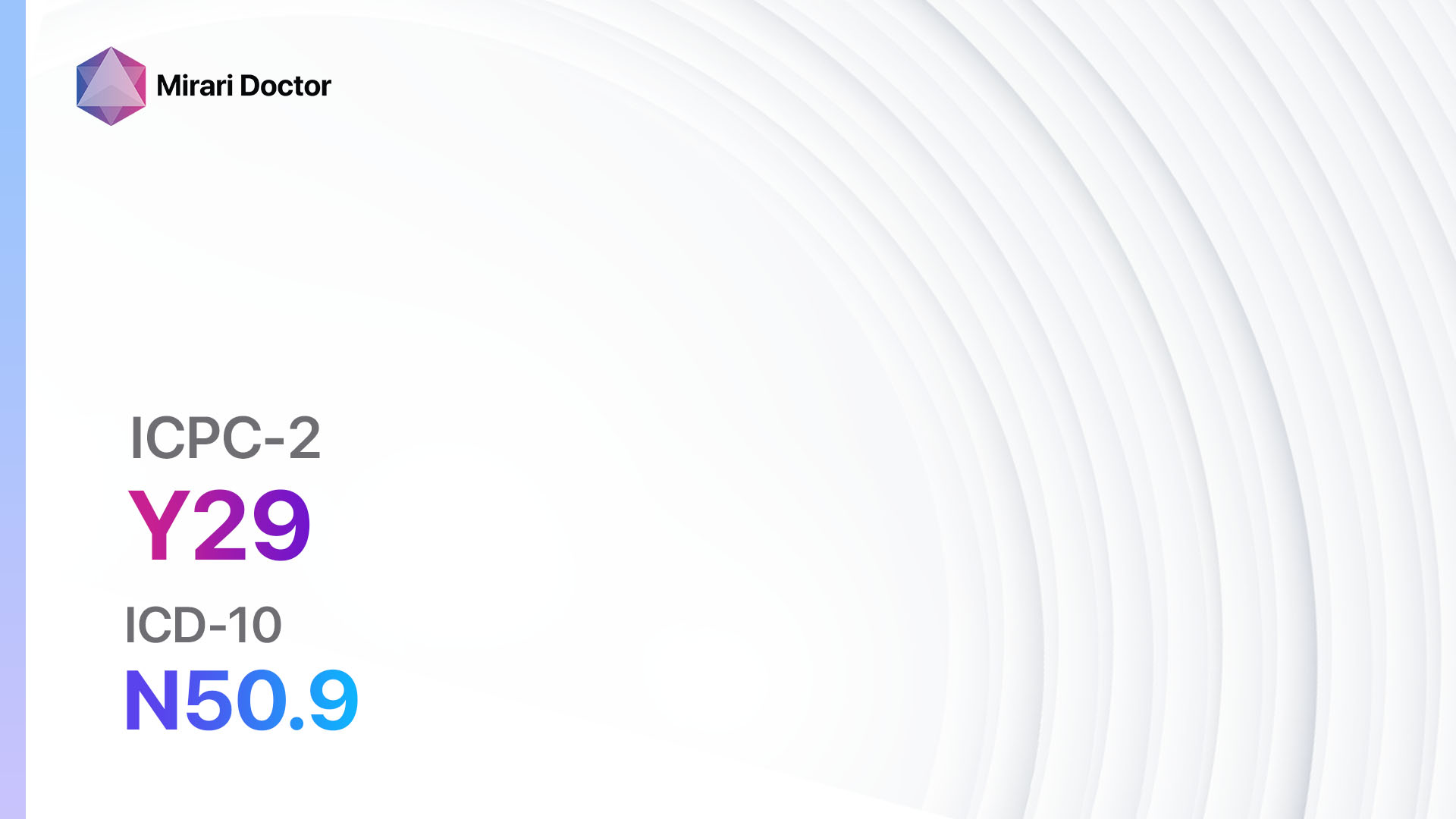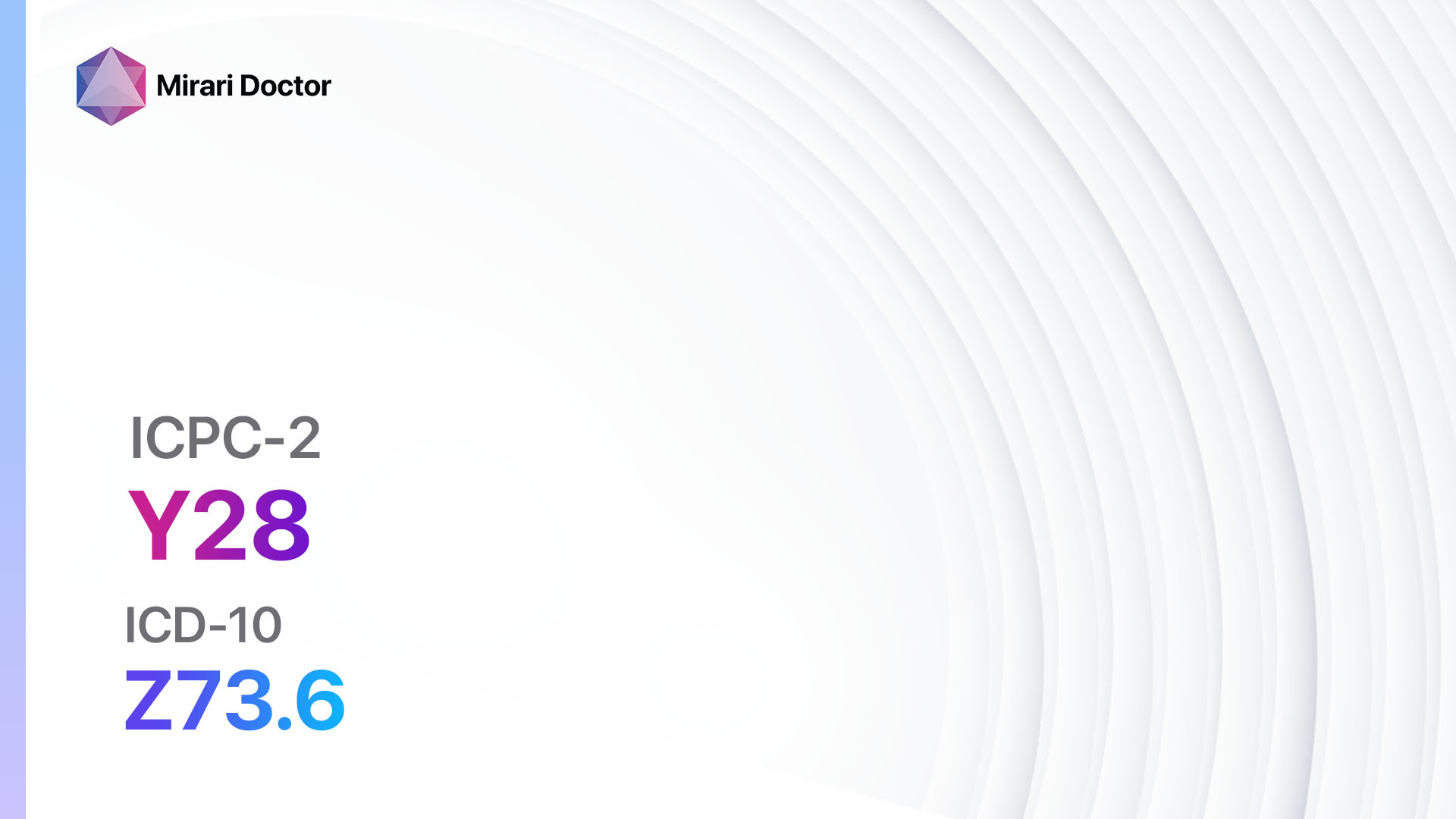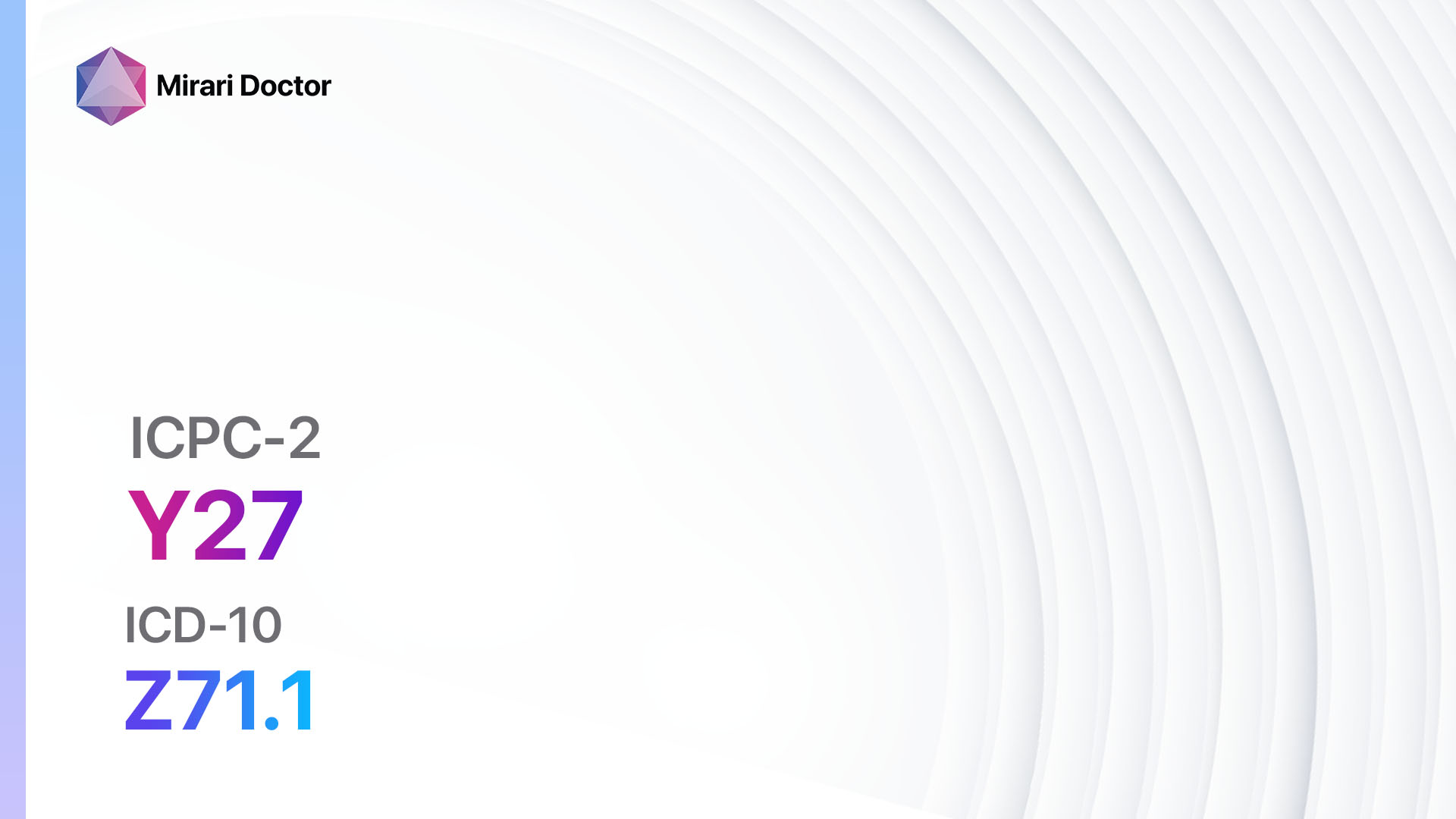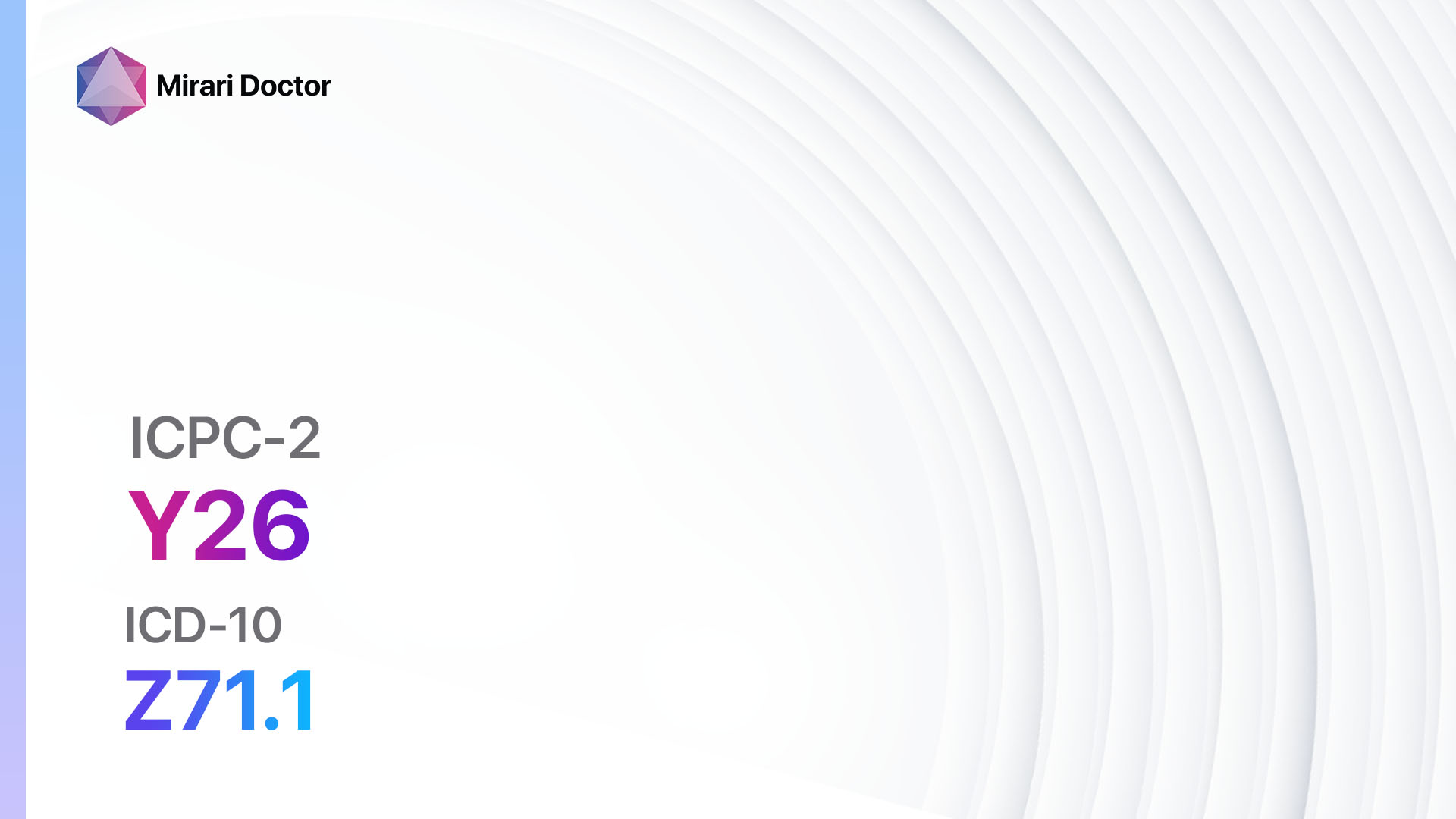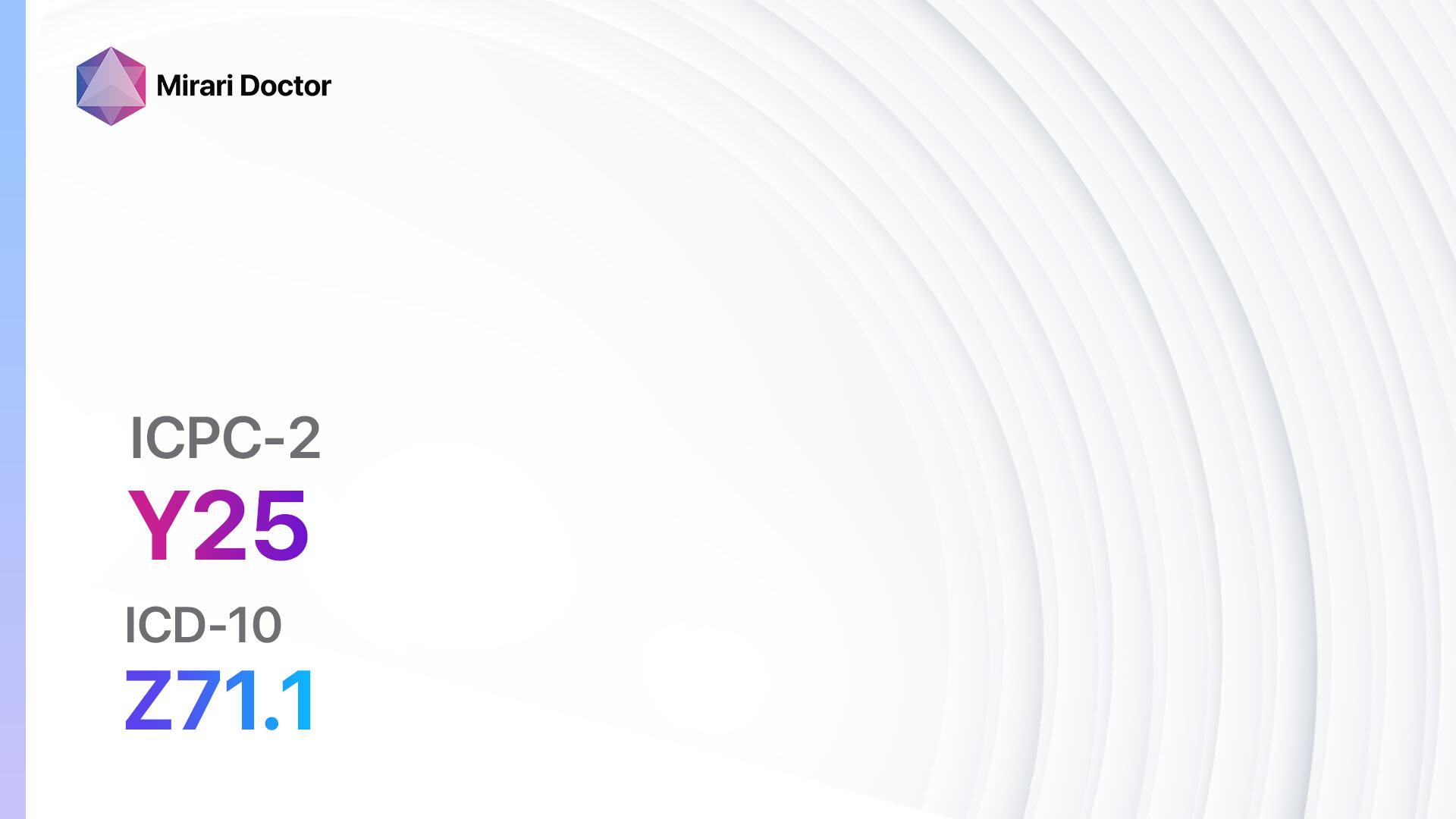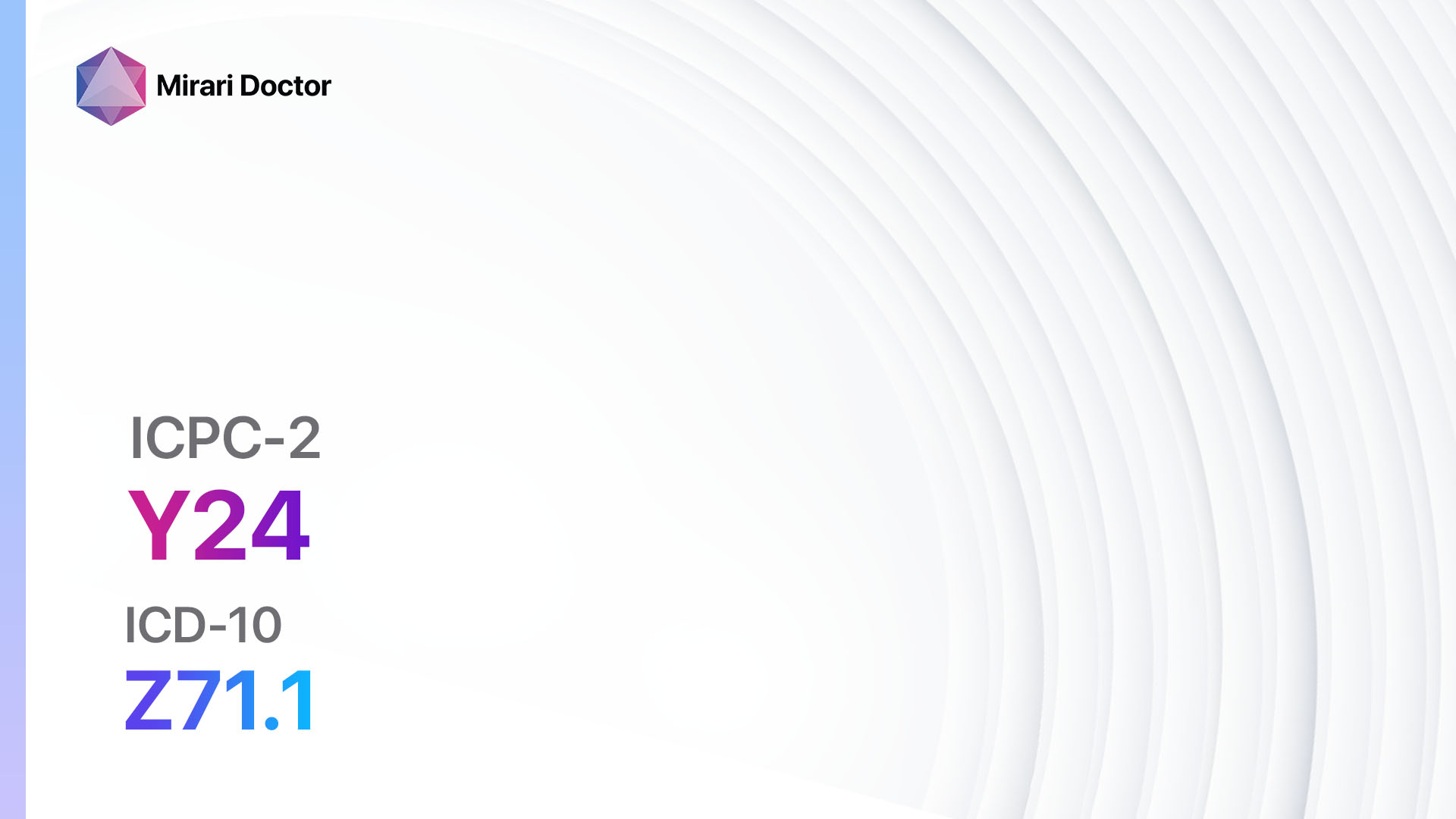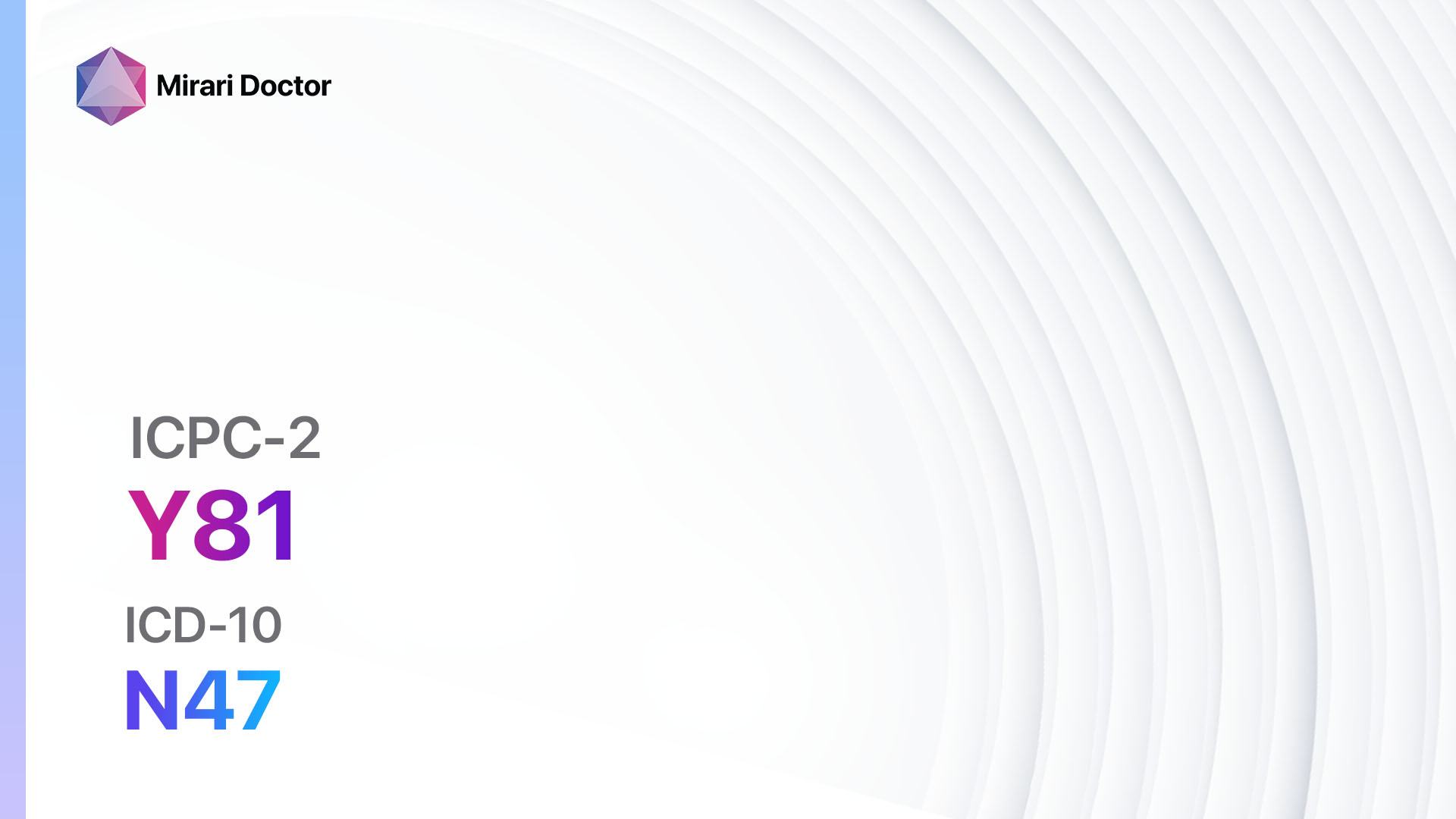
Introduction
Phimosis is a condition in which the foreskin of the penis cannot be fully retracted, leading to difficulty in hygiene and potential complications. Redundant prepuce refers to excess foreskin that can contribute to phimosis. This guide aims to provide a comprehensive overview of the symptoms, causes, diagnostic steps, possible interventions, and patient education related to phimosis/redundant prepuce.[1]
Codes
- ICPC-2 Code: Y81 Phimosis/redundant prepuce[2]
- ICD-10 Code: N47 Redundant prepuce, phimosis and paraphimosis[3]
Symptoms
- Difficulty retracting the foreskin
- Pain or discomfort during sexual intercourse or urination
- Swelling or inflammation of the foreskin
- Inability to clean the penis properly
- Recurrent urinary tract infections[4]
Causes
- Congenital narrowing of the foreskin opening
- Scarring or inflammation of the foreskin due to infections or injury
- Poor hygiene leading to the buildup of smegma, a substance that can cause the foreskin to adhere to the glans[5]
Diagnostic Steps
Medical History
- Gather information about the patient’s symptoms, including pain, difficulty retracting the foreskin, and any previous episodes of infection or inflammation.
- Inquire about the patient’s hygiene practices and any history of trauma or injury to the genital area.
- Assess for risk factors such as diabetes, which can increase the risk of developing phimosis.[6]
Physical Examination
- Examine the penis and foreskin to assess the degree of phimosis and the presence of any inflammation, scarring, or other abnormalities.
- Determine whether the foreskin can be retracted fully or partially.
- Check for signs of infection, such as redness, swelling, or discharge.[7]
Laboratory Tests
- No specific laboratory tests are typically required for the diagnosis of phimosis/redundant prepuce. However, if there are signs of infection, a urine culture or swab of the penile discharge may be done to identify the causative organism.[8]
Diagnostic Imaging
- Diagnostic imaging is not usually necessary for the diagnosis of phimosis/redundant prepuce. However, in cases where there is suspicion of an underlying anatomical abnormality or scarring, ultrasound or other imaging modalities may be used to assess the condition.[9]
Other Tests
- In some cases, a biopsy of the foreskin may be performed to rule out other conditions, such as balanitis xerotica obliterans (BXO) or penile cancer.[10]
Follow-up and Patient Education
- Schedule follow-up appointments to monitor the progress of treatment and ensure that the patient is managing the condition appropriately.
- Educate the patient about proper hygiene practices, including regular cleaning of the penis and gentle retraction of the foreskin.
- Discuss the importance of maintaining good genital hygiene to prevent the recurrence of symptoms.[1][4]
Possible Interventions
Traditional Interventions
Medications:
Top 5 drugs for Phimosis/Redundant Prepuce:
- Topical corticosteroids (e.g., Betamethasone, Hydrocortisone):
- Cost: $10-$50 per tube.
- Contraindications: Hypersensitivity to corticosteroids.
- Side effects: Skin thinning, irritation.
- Severe side effects: Systemic absorption leading to adrenal suppression (rare).
- Drug interactions: None reported.
- Warning: Avoid excessive or prolonged use due to the risk of skin atrophy.
- Topical emollients (e.g., Petroleum jelly, Moisturizing creams):
- Cost: $5-$20 per jar/tube.
- Contraindications: Hypersensitivity to the product.
- Side effects: None reported.
- Severe side effects: None reported.
- Drug interactions: None reported.
- Warning: Use as directed for moisturizing and softening the foreskin to facilitate retraction.
- Antibiotics (e.g., Cephalexin, Amoxicillin):
- Cost: $10-$50 per course.
- Contraindications: Hypersensitivity to antibiotics.
- Side effects: Upset stomach, diarrhea.
- Severe side effects: Severe allergic reactions, antibiotic-associated diarrhea.
- Drug interactions: None reported.
- Warning: Complete the full course of antibiotics as prescribed to treat any underlying infections.
- Antifungal agents (e.g., Clotrimazole, Miconazole):
- Cost: $10-$30 per tube.
- Contraindications: Hypersensitivity to antifungal agents.
- Side effects: Local irritation, itching.
- Severe side effects: Severe allergic reactions (rare).
- Drug interactions: None reported.
- Warning: Use as directed for the treatment of fungal infections, if present.
- NSAIDs (e.g., Ibuprofen, Naproxen):
- Cost: $5-$20 per bottle.
- Contraindications: Hypersensitivity to NSAIDs, history of peptic ulcer disease.
- Side effects: Upset stomach, abdominal pain.
- Severe side effects: Increased risk of gastrointestinal bleeding, kidney damage.
- Drug interactions: Warfarin, other NSAIDs.
- Warning: Use as directed for the relief of pain and inflammation, if present.
Surgical Procedures:
- Circumcision: Surgical removal of the foreskin.
- Cost: $1,500-$3,000.
- Contraindications: Bleeding disorders, active infection, certain medical conditions.
- Side effects: Pain, bleeding, infection.
- Severe side effects: Rare but can include excessive bleeding, damage to the glans or urethra.
- Drug interactions: None reported.
- Warning: Requires post-operative care and hygiene to prevent complications.
- Preputioplasty: Surgical procedure to release or widen the foreskin.
- Cost: $2,000-$4,000.
- Contraindications: Severe scarring or inflammation, other medical conditions preventing surgery.
- Side effects: Pain, bleeding, infection.
- Severe side effects: Rare but can include excessive bleeding, damage to the glans or urethra.
- Drug interactions: None reported.
- Warning: Requires post-operative care and hygiene to prevent complications.
Alternative Interventions
- Stretching exercises: Regularly stretching the foreskin under medical supervision to gradually increase its flexibility and allow for easier retraction. Cost: None.
- Dilators: The use of cone-shaped dilators to gently stretch the foreskin. Cost: $20-$50 per set.
- Homeopathic remedies: Certain homeopathic treatments, such as Calendula ointment or Thuja oil, may be used topically to reduce inflammation and promote healing. Cost: Varies depending on the specific product.
- Laser therapy: Laser treatment to reduce inflammation and promote the healing of scar tissue. Cost: $100-$300 per session.
- Phimocure Rings: A set of graduated rings that are worn to gradually stretch the foreskin. Cost: $50-$100 per set.
Lifestyle Interventions
- Improved hygiene: Regularly cleaning the penis and foreskin to prevent the buildup of smegma and reduce the risk of infection. Cost: None.
- Weight loss: Losing excess weight can improve overall health and reduce the risk of inflammation or infections. Cost: Varies depending on the weight loss program or method chosen.
- Smoking cessation: Quitting smoking can improve blood circulation and reduce the risk of complications. Cost: Varies depending on the method chosen for smoking cessation.
- Healthy diet: Consuming a balanced diet rich in fruits, vegetables, and whole grains can promote overall health and reduce the risk of inflammation. Cost: Varies depending on individual dietary choices.
- Stress management: Engaging in stress-reducing activities, such as exercise, meditation, or therapy, can help manage symptoms and improve overall well-being. Cost: Varies depending on the chosen stress management techniques.
It is important to note that the cost ranges provided are approximate and may vary depending on the location and availability of the interventions.
Mirari Cold Plasma Alternative Intervention
Understanding Mirari Cold Plasma
- Safe and Non-Invasive Treatment: Mirari Cold Plasma is a safe and non-invasive treatment option for various skin conditions. It does not require incisions, minimizing the risk of scarring, bleeding, or tissue damage.
- Efficient Extraction of Foreign Bodies: Mirari Cold Plasma facilitates the removal of foreign bodies from the skin by degrading and dissociating organic matter, allowing easier access and extraction.
- Pain Reduction and Comfort: Mirari Cold Plasma has a local analgesic effect, providing pain relief during the treatment, making it more comfortable for the patient.
- Reduced Risk of Infection: Mirari Cold Plasma has antimicrobial properties, effectively killing bacteria and reducing the risk of infection.
- Accelerated Healing and Minimal Scarring: Mirari Cold Plasma stimulates wound healing and tissue regeneration, reducing healing time and minimizing the formation of scars.
Mirari Cold Plasma Prescription
Video instructions for using Mirari Cold Plasma Device – Y81 Phimosis/redundant prepuce (ICD-10:N47)
| Mild | Moderate | Severe |
| Mode setting: 1 (Infection) Location: 0 (Localized) Morning: 15 minutes, Evening: 15 minutes |
Mode setting: 1 (Infection) Location: 0 (Localized) Morning: 30 minutes, Lunch: 30 minutes, Evening: 30 minutes |
Mode setting: 1 (Infection) Location: 0 (Localized) Morning: 30 minutes, Lunch: 30 minutes, Evening: 30 minutes |
| Mode setting: 2 (Wound Healing) Location: 0 (Localized) Morning: 15 minutes, Evening: 15 minutes |
Mode setting: 2 (Wound Healing) Location: 0 (Localized) Morning: 30 minutes, Lunch: 30 minutes, Evening: 30 minutes |
Mode setting: 2 (Wound Healing) Location: 0 (Localized) Morning: 30 minutes, Lunch: 30 minutes, Evening: 30 minutes |
| Mode setting: 5 (Prostatitis Therapy) Location: 0 (Localized) Morning: 15 minutes, Evening: 15 minutes |
Mode setting: 5 (Prostatitis Therapy) Location: 0 (Localized) Morning: 30 minutes, Lunch: 30 minutes, Evening: 30 minutes |
Mode setting: 5 (Prostatitis Therapy) Location: 0 (Localized) Morning: 30 minutes, Lunch: 30 minutes, Evening: 30 minutes |
| Mode setting: 7 (Immunotherapy) Location: 1 (Sacrum) Morning: 15 minutes, Evening: 15 minutes |
Mode setting: 7 (Immunotherapy) Location: 1 (Sacrum) Morning: 30 minutes, Lunch: 30 minutes, Evening: 30 minutes |
Mode setting: 7 (Immunotherapy) Location: 1 (Sacrum) Morning: 30 minutes, Lunch: 30 minutes, Evening: 30 minutes |
| Total Morning: 60 minutes approx. $10 USD, Evening: 60 minutes approx. $10 USD |
Total Morning: 120 minutes approx. $20 USD, Lunch: 120 minutes approx. $20 USD, Evening: 120 minutes approx. $20 USD, |
Total Morning: 120 minutes approx. $20 USD, Lunch: 120 minutes approx. $20 USD, Evening: 120 minutes approx. $20 USD, |
| Usual treatment for 7-60 days approx. $140 USD – $1200 USD | Usual treatment for 6-8 weeks approx. $2,520 USD – $3,360 USD |
Usual treatment for 3-6 months approx. $5,400 USD – $10,800 USD
|
 |
|
Use the Mirari Cold Plasma device to treat Phimosis/redundant prepuce effectively.
WARNING: MIRARI COLD PLASMA IS DESIGNED FOR THE HUMAN BODY WITHOUT ANY ARTIFICIAL OR THIRD PARTY PRODUCTS. USE OF OTHER PRODUCTS IN COMBINATION WITH MIRARI COLD PLASMA MAY CAUSE UNPREDICTABLE EFFECTS, HARM OR INJURY. PLEASE CONSULT A MEDICAL PROFESSIONAL BEFORE COMBINING ANY OTHER PRODUCTS WITH USE OF MIRARI.
Step 1: Cleanse the Skin
- Start by cleaning the affected area of the skin with a gentle cleanser or mild soap and water. Gently pat the area dry with a clean towel.
Step 2: Prepare the Mirari Cold Plasma device
- Ensure that the Mirari Cold Plasma device is fully charged or has fresh batteries as per the manufacturer’s instructions. Make sure the device is clean and in good working condition.
- Switch on the Mirari device using the power button or by following the specific instructions provided with the device.
- Some Mirari devices may have adjustable settings for intensity or treatment duration. Follow the manufacturer’s instructions to select the appropriate settings based on your needs and the recommended guidelines.
Step 3: Apply the Device
- Place the Mirari device in direct contact with the affected area of the skin. Gently glide or hold the device over the skin surface, ensuring even coverage of the area experiencing.
- Slowly move the Mirari device in a circular motion or follow a specific pattern as indicated in the user manual. This helps ensure thorough treatment coverage.
Step 4: Monitor and Assess:
- Keep track of your progress and evaluate the effectiveness of the Mirari device in managing your Phimosis/redundant prepuce. If you have any concerns or notice any adverse reactions, consult with your health care professional.
Note
This guide is for informational purposes only and should not replace the advice of a medical professional. Always consult with your healthcare provider or a qualified medical professional for personal advice, diagnosis, or treatment. Do not solely rely on the information presented here for decisions about your health. Use of this information is at your own risk. The authors of this guide, nor any associated entities or platforms, are not responsible for any potential adverse effects or outcomes based on the content.
Mirari Cold Plasma System Disclaimer
- Purpose: The Mirari Cold Plasma System is a Class 2 medical device designed for use by trained healthcare professionals. It is registered for use in Thailand and Vietnam. It is not intended for use outside of these locations.
- Informational Use: The content and information provided with the device are for educational and informational purposes only. They are not a substitute for professional medical advice or care.
- Variable Outcomes: While the device is approved for specific uses, individual outcomes can differ. We do not assert or guarantee specific medical outcomes.
- Consultation: Prior to utilizing the device or making decisions based on its content, it is essential to consult with a Certified Mirari Tele-Therapist and your medical healthcare provider regarding specific protocols.
- Liability: By using this device, users are acknowledging and accepting all potential risks. Neither the manufacturer nor the distributor will be held accountable for any adverse reactions, injuries, or damages stemming from its use.
- Geographical Availability: This device has received approval for designated purposes by the Thai and Vietnam FDA. As of now, outside of Thailand and Vietnam, the Mirari Cold Plasma System is not available for purchase or use.
References
- Hayashi Y, Kojima Y, Mizuno K, Kohri K. Prepuce: phimosis, paraphimosis, and circumcision. ScientificWorldJournal. 2011;11:289-301.
- World Health Organization. International Classification of Primary Care, Second edition (ICPC-2). Geneva: WHO; 2003.
- World Health Organization. International Statistical Classification of Diseases and Related Health Problems, 10th Revision (ICD-10). Geneva: WHO; 2019.
- Morris BJ, Krieger JN. Penile Inflammatory Skin Disorders and the Preventive Role of Circumcision. Int J Prev Med. 2017;8:32.
- Shahid SK. Phimosis in children. ISRN Urol. 2012;2012:707329.
- Krill AJ, Palmer LS, Palmer JS. Complications of circumcision. ScientificWorldJournal. 2011;11:2458-2468.
- McGregor TB, Pike JG, Leonard MP. Pathologic and physiologic phimosis: approach to the phimotic foreskin. Can Fam Physician. 2007;53(3):445-448.
- Escala JM, Rickwood AM. Balanitis. Br J Urol. 1989;63(2):196-197.
- Cheng SY, Cheng YT, Chen SJ, Hueng GG. Penile ultrasound evaluation in children with phimosis. Pediatr Neonatol. 2018;59(6):548-553.
- Celis S, Reed F, Murphy F, Adams S, Gillick J, Abdelhafeez AH, Lopez PJ. Balanitis xerotica obliterans in children and adolescents: a literature review and clinical series. J Pediatr Urol. 2014;10(1):34-39.
Related articles
Made in USA


